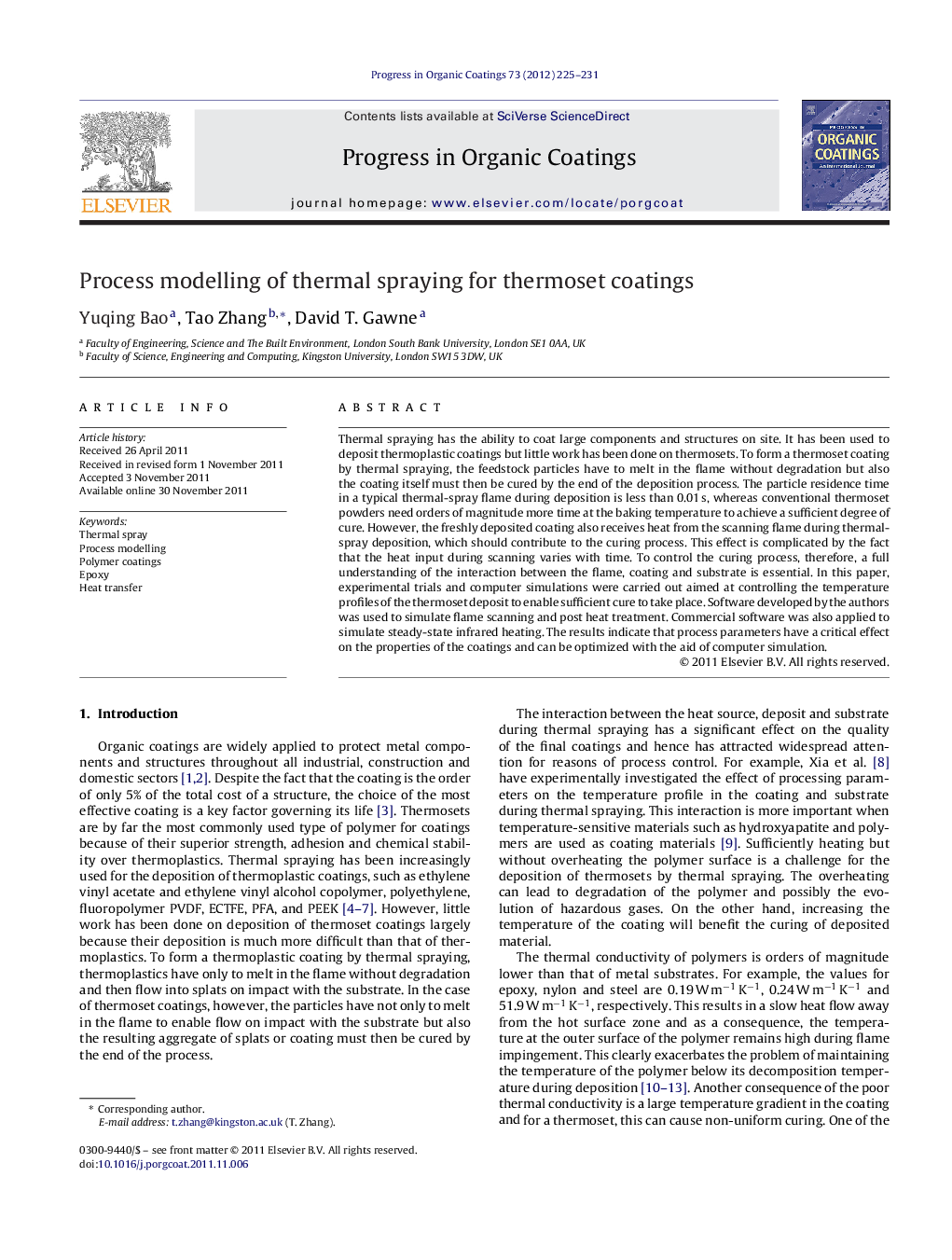| کد مقاله | کد نشریه | سال انتشار | مقاله انگلیسی | نسخه تمام متن |
|---|---|---|---|---|
| 692736 | 1460529 | 2012 | 7 صفحه PDF | دانلود رایگان |

Thermal spraying has the ability to coat large components and structures on site. It has been used to deposit thermoplastic coatings but little work has been done on thermosets. To form a thermoset coating by thermal spraying, the feedstock particles have to melt in the flame without degradation but also the coating itself must then be cured by the end of the deposition process. The particle residence time in a typical thermal-spray flame during deposition is less than 0.01 s, whereas conventional thermoset powders need orders of magnitude more time at the baking temperature to achieve a sufficient degree of cure. However, the freshly deposited coating also receives heat from the scanning flame during thermal-spray deposition, which should contribute to the curing process. This effect is complicated by the fact that the heat input during scanning varies with time. To control the curing process, therefore, a full understanding of the interaction between the flame, coating and substrate is essential. In this paper, experimental trials and computer simulations were carried out aimed at controlling the temperature profiles of the thermoset deposit to enable sufficient cure to take place. Software developed by the authors was used to simulate flame scanning and post heat treatment. Commercial software was also applied to simulate steady-state infrared heating. The results indicate that process parameters have a critical effect on the properties of the coatings and can be optimized with the aid of computer simulation.
► A computer model has been developed to simulate the temperature profile in a coating and substrate during deposition and post-infrared heating.
► Dynamic boundary conditions can be used in the simulation to predict the effect of a moving flame.
► The effect of substrate thickness and heating powder can be simulated using the software developed in the paper in conjunction with commercial software.
► The results show that a large temperature gradient in the coating is built up during flame scanning and infrared heating.
► The temperature in the coating and substrate were simulated and the results can be used to modify the heating power to achieve acceptable curing for thermoset coatings.
Journal: Progress in Organic Coatings - Volume 73, Issues 2–3, February–March 2012, Pages 225–231